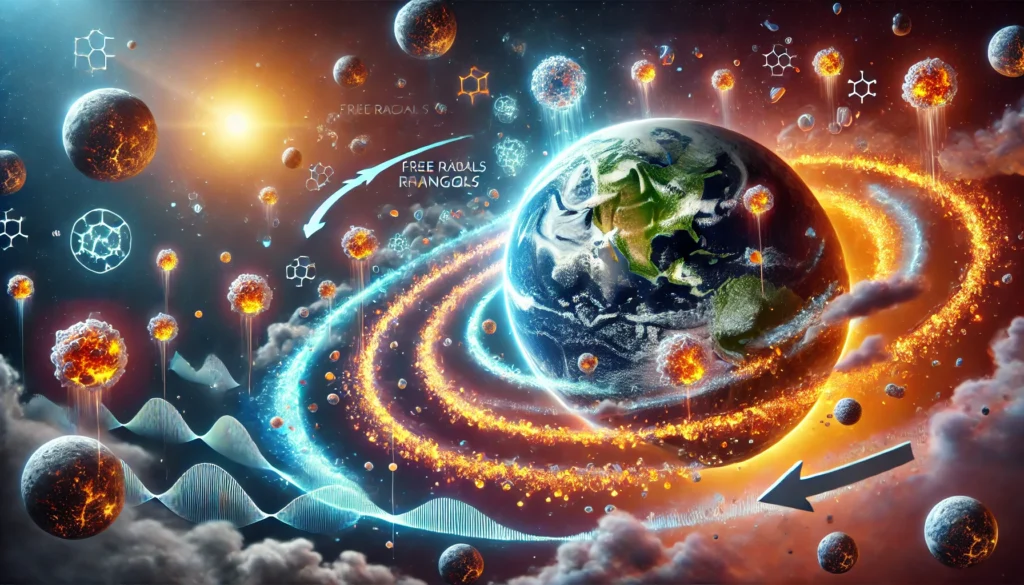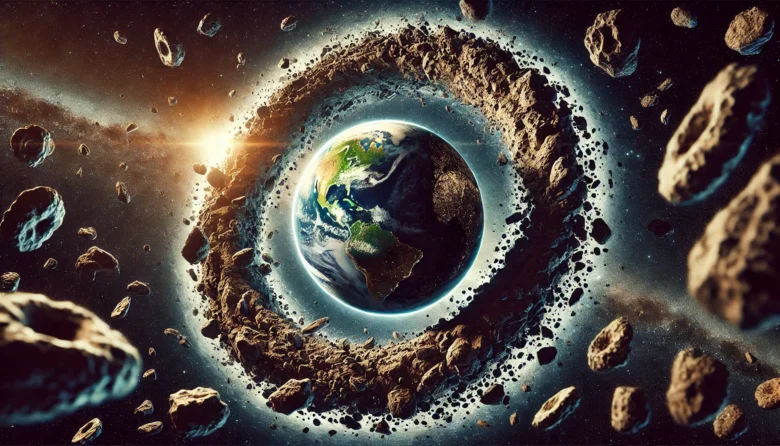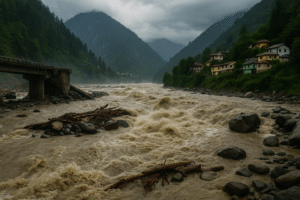When we think of planetary rings, Saturn’s dazzling and expansive ring system often comes to mind. But did you know that Earth might have once sported its own ring composed of asteroid debris? This new theory not only sparks curiosity about our planet’s ancient past but also opens a fascinating discussion on how an asteroid ring may have impacted Earth’s climate, specifically triggering a significant cooling event around 460-465 million years ago. In this blog, we’ll explore how an ancient asteroid ring may have shaped Earth’s climate and why this discovery matters in the context of today’s climate challenges.
The Formation of Earth’s Ancient Asteroid Ring
The idea that Earth may have once had a ring, like Saturn or Neptune, is a relatively new discovery published in the journal Earth and Planetary Science Letters. Scientists believe that a massive asteroid came dangerously close to Earth about 466 million years ago, with its gravitational pull stretching and breaking it apart into smaller fragments. Over time, these pieces formed a debris ring around our planet, orbiting along the equator.
What’s intriguing is that the debris from this ancient asteroid ring didn’t stay in space forever. Slowly, over millions of years, gravity pulled some of this material back to Earth’s surface, where it would have impacted the planet, forming craters and potentially influencing the climate.

The Ordovician Global Cooling: A Chilling Effect
During the time this ring may have existed, Earth experienced what’s known as the Late Ordovician Ice Age, a period of dramatic global cooling. Temperatures dropped significantly, and large ice sheets formed, causing sea levels to plummet. This cooling event is thought to have caused one of the planet’s most severe mass extinctions, wiping out nearly 85% of all marine species at the time.
But what does a debris ring have to do with global cooling? Researchers suggest that the ring may have acted as a “giant parasol,” reducing the amount of sunlight that reached Earth’s surface. The ring’s shadow, particularly along the equator, would have reflected some of the solar energy back into space, lowering surface temperatures and contributing to the cooling trend.
This phenomenon mirrors how volcanic eruptions can cause temporary cooling. For example, when Mount Pinatubo erupted in 1991, it released massive amounts of ash and sulfur dioxide into the atmosphere, reflecting sunlight and causing global temperatures to drop slightly for a few years.
The Science of Rings and Climate
Asteroid rings aren’t just fascinating space phenomena—they also interact with planetary climates in complex ways. Imagine Earth with a ring! Much like Saturn’s rings, which reflect sunlight and cast shadows on the planet’s surface, an asteroid ring around Earth could have had similar cooling effects. The debris from such a ring orbiting the equator would have deflected some of the sun’s heat, especially in the tropics, leading to less warming.
The effect of Earth’s tilt would also be crucial here. Earth is tilted at about 23.5 degrees, which means some regions receive more sunlight during different parts of the year. A ring could have subtly altered how sunlight was distributed, especially during different seasons, exacerbating cooling in some regions while slightly warming others.
Drawing Parallels to Modern Climate Change
While Earth’s ancient asteroid ring is long gone, the lessons we can draw from this period of history are still relevant today. The Ordovician cooling event was a natural process influenced by extraterrestrial debris and volcanic activity. In contrast, today’s climate change is largely fueled by human activities such as burning fossil fuels, deforestation, and industrial practices that emit greenhouse gases into the atmosphere.
There is an interesting parallel between how a debris ring may have cooled the Earth and how geoengineering solutions are being proposed to combat today’s warming. Geoengineering involves techniques like solar radiation management (SRM), where scientists propose reflecting some of the sun’s energy back into space to cool the planet, much like how Earth’s ancient ring may have once done.
For example, certain scientists have suggested introducing aerosols into the stratosphere to replicate the cooling effect caused by volcanic eruptions. While the idea sounds promising, it comes with numerous ethical and environmental challenges. One wrong move could trigger unintended consequences, such as disrupting weather patterns or damaging the ozone layer.
Learning from the Past to Save the Future
The story of Earth’s ancient asteroid ring serves as a reminder of how delicate the balance of our planet’s climate can be. Back in the Ordovician period, a debris ring may have contributed to a significant global cooling event, showing how even small changes in solar radiation can lead to massive environmental shifts. Today, we face the opposite challenge: global warming.
Understanding the mechanisms that led to past cooling events, whether from a debris ring or volcanic activity, can help scientists devise better strategies to mitigate the effects of climate change. Whether through natural cooling techniques or more controversial geoengineering methods, it’s clear that controlling the planet’s temperature isn’t easy—and requires a deep understanding of Earth’s history.
Conclusion
The theory of an ancient asteroid ring around Earth gives us a glimpse into how cosmic events can shape our planet’s climate. While we may never see such a ring again, its potential influence on global cooling during the Ordovician period offers valuable insights into the interplay between space and Earth’s atmosphere. As we face the challenges of modern climate change, reflecting on these ancient processes can provide clues on how to protect our planet from the escalating dangers of global warming.
Call to action: Let’s continue to study Earth’s climate history to understand our future better. Whether it’s learning from an asteroid ring or from human-induced carbon emissions, one thing is clear: the more we know, the better equipped we’ll be to save our planet.
Author’s Note
It’s fascinating to think about how Earth’s history is written not only in its geology but also in the skies above. Discovering that our planet might have had a ring like Saturn opens up new ways to think about how our climate has evolved over millions of years. I hope this blog sparks curiosity about how even distant celestial events can have profound impacts on our everyday lives.
G.C., Ecosociosphere contributor.
References and Further Reading
- NASA: Earth’s Ancient Ring
- 6 Shocking Facts About The Nearest Planet to the Sun, Mercury – GineersNow. https://gineersnow.com/engineering/science/6-shocking-facts-about-the-nearest-planet-to-the-sun-mercury




